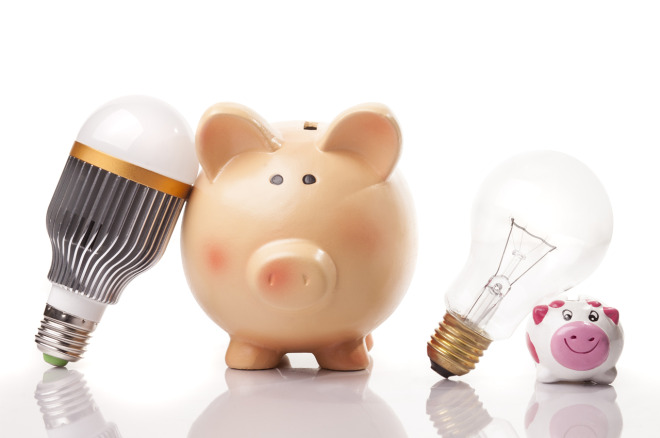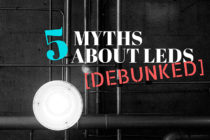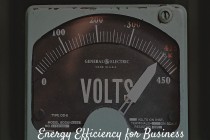This time of year sees us through the shortest days with the least number of daylight hours. As business owners and homeowners, we all prepare for the energy consumption spike, and the utility bills to match. Life doesn’t stop when the sun goes down and this means indoor and outdoor lights are on for longer periods of time as we go about our busy lives. As a result, consumers are looking very closely at the options for switching to more energy efficient options and some interesting statistics have come to light—pardon the pun. Fortunately there are a few simple changes you can make to help reduce the impending energy spike and reduce electricity costs now, and for months and years to come.
It may seem moot to discuss the near-extinct incandescent bulb at this point, but it serves as an important comparison. A traditional incandescent lasts approximately 1000-2000 hours and uses only 10% of the energy it draws to create light, while dissipating the rest as heat. LED lights, on the other hand, use approximately 1/5 the energy of incandescents, and can run for up to 70, 000 hours, or the equivalent of eight years of continuous operation. That’s a lot of dark days and nights! Global News article, “What you need to know about LED bulbs,” by Brian McKechnie really puts these stats to the test and shows how it adds up for the average household.
Brian bought an LED bulb that uses 9.5W of energy and has a lifespan of 25, 000 hours. He calculated that using this bulb for an average of three hours a day, seven days a week will make it last close to 23 years, compared to a regular 60W incandescent bulb which lasts an average 1000 hours and may need replacing up to 25 times over the same lifespan.
What does that look like on a power bill? Brian did the math based on an average peak cost of electricity at $0.11 kWh. Using his LED bulb three hours a day, seven days a week, works out to a total of $1.14 per year or $26 over the 23-year lifespan of the bulb. Using the same numbers, it will cost approximately $166 on electricity to run a 60W incandescent bulb for the same period of time, not including the cost of replacing the bulb 25 times. Now multiply that by the number of light bulbs in your home and the savings are substantial.
Not only does saving money feel good, but making a change that is environmentally responsible feels great too. Switching to LED is a bright idea that just makes good sense (and cents). And easing the pinch on the pocketbook while brightening up the dark days of winter is a welcome relief!
About The Author

-
Serial Entrepreneur, Technologist and Inventor.
My objective is to develop useful products that have a net positive effect in the lives of those that use them and the environment that we live in.
CEO of Mission LED Lighting Company Ltd.
- 2017.05.24LED factsWhy Are Cars Switching to LEDs if They’re Too Bright?
- 2017.05.09Be green & saveHow to Easily Replace T8 Fluorescent Tubes With LED
- 2017.03.07Build a better future7 Things About Explosion Proof LED Lighting You Should Know
- 2017.02.28Be green & saveWhy We Love LED Grow Lights (And You Should, Too!)





Leave a Reply